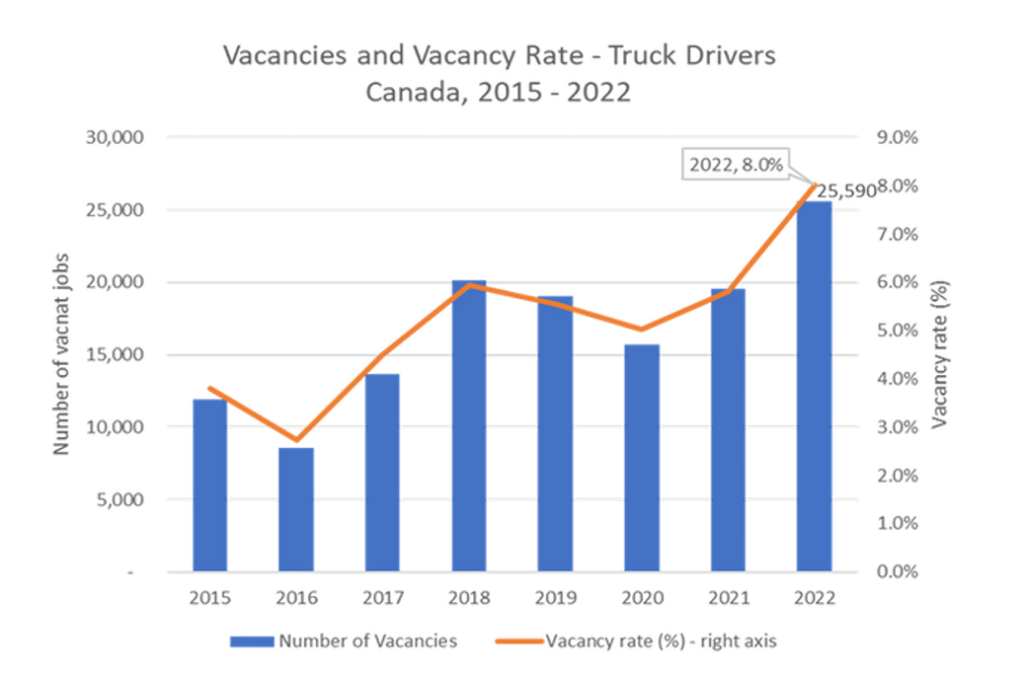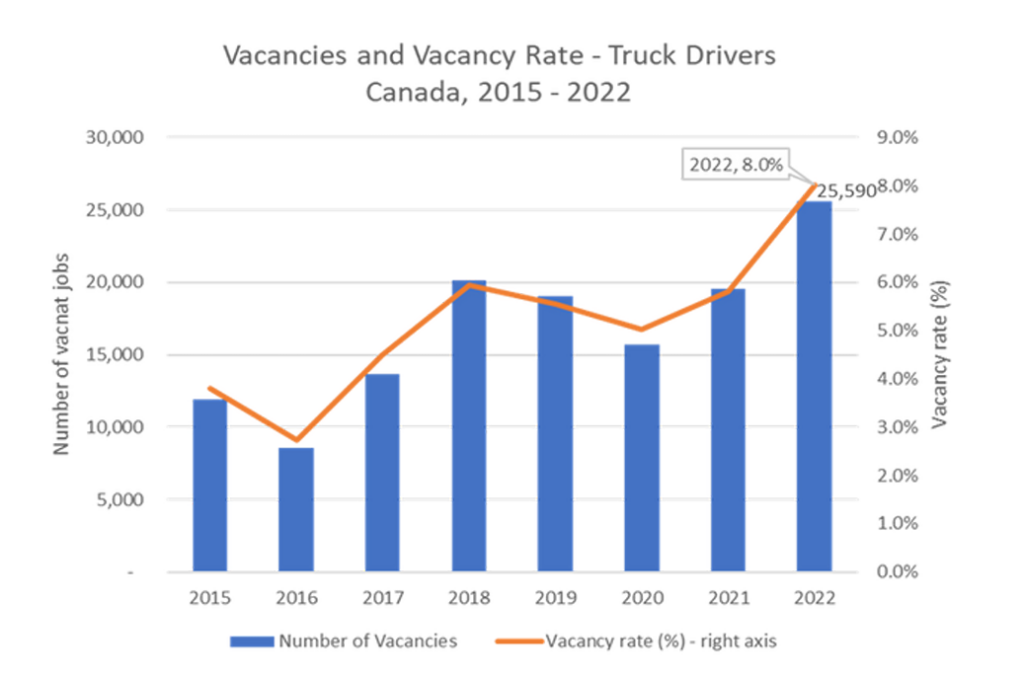The trucking and logistics sector plays a crucial role in the Canadian economy, facilitating the movement of goods and supplies across the country. However, recent job vacancy data suggests that the industry is facing significant challenges in recruiting and retaining workers, with a growing gap between supply and demand.
According to the newly published vacancy data for the fourth quarter of 2022, the vacancy rate in the truck transportation industry (NAICS 484) dropped to 7.5% in Q4 compared with 8.7% in Q3. Despite this drop in the last quarter, the average vacancy rate for 2022 was 8.6%, much higher than in 2021 (7.1%). The vacancy rate in the truck transportation industry has more than tripled since Statistics Canada began collecting this data in 2015 and is more than two times higher than in 2019, prior to the onset of COVID-19.
The situation is similar for transport truck drivers (NOC 7511), with the vacancy rate dropping from 7.9% in Q3 to 6.9% in Q4. The annual vacancy rate for 2022 stood at 8.0%, up significantly from 2021 (5.8%). The number of truck driver vacancies in 2022 stood at an all-time high with almost 25,600 vacant positions, an increase of 6,578 additional driver vacancies, up 35% over 2019, prior to the pandemic.
Combined with a very low unemployment rate of 3.4% among transport truck drivers in 2022, the gap between the demand for workers and the supply of trained, experienced drivers stood at almost 15,200 drivers in 2022. This gap represents the minimum number of drivers that still need to be recruited, trained and on-boarded, even if every single unemployed driver in the labour market were available and suitable for the vacant positions. Even though the total demand for drivers fell by 4.7% between 2021 and 2022, the supply of experienced drivers fell even farther, dropping by 7.7% between 2021 and 2022. In fact, the total number of transport truck drivers in the Canadian labour force declined by 25,550 workers in 2022.
The trucking and logistics sector's labour market is struggling to keep up with the demand for trucking services to support an economy still in recovery from the pandemic and experiencing persistent supply chain challenges. These newly available vacancy data suggest that an "all hands-on deck" approach to labour supply management strategies is needed.
Trucking HR Canada, an organization dedicated to promoting the Canadian trucking and logistics industry's recruitment and retention, sees many more opportunities for government to support their work. The Sectoral Workforce Solutions Program, Youth Employment Skills Strategy, and Student Work Placement Program are a few of the initiatives that are helping to bring new workers into the sector and support the onboarding of new drivers and other in-demand occupations.
In conclusion, the trucking and logistics sector in Canada is facing a significant workforce shortage that is only expected to worsen in the coming years. It is essential for industry stakeholders and policymakers to work together to address the recruitment and retention challenges facing the sector and ensure a steady supply of trained and experienced workers to support the Canadian economy's growth and recovery.

 (604) 757 2441
(604) 757 2441